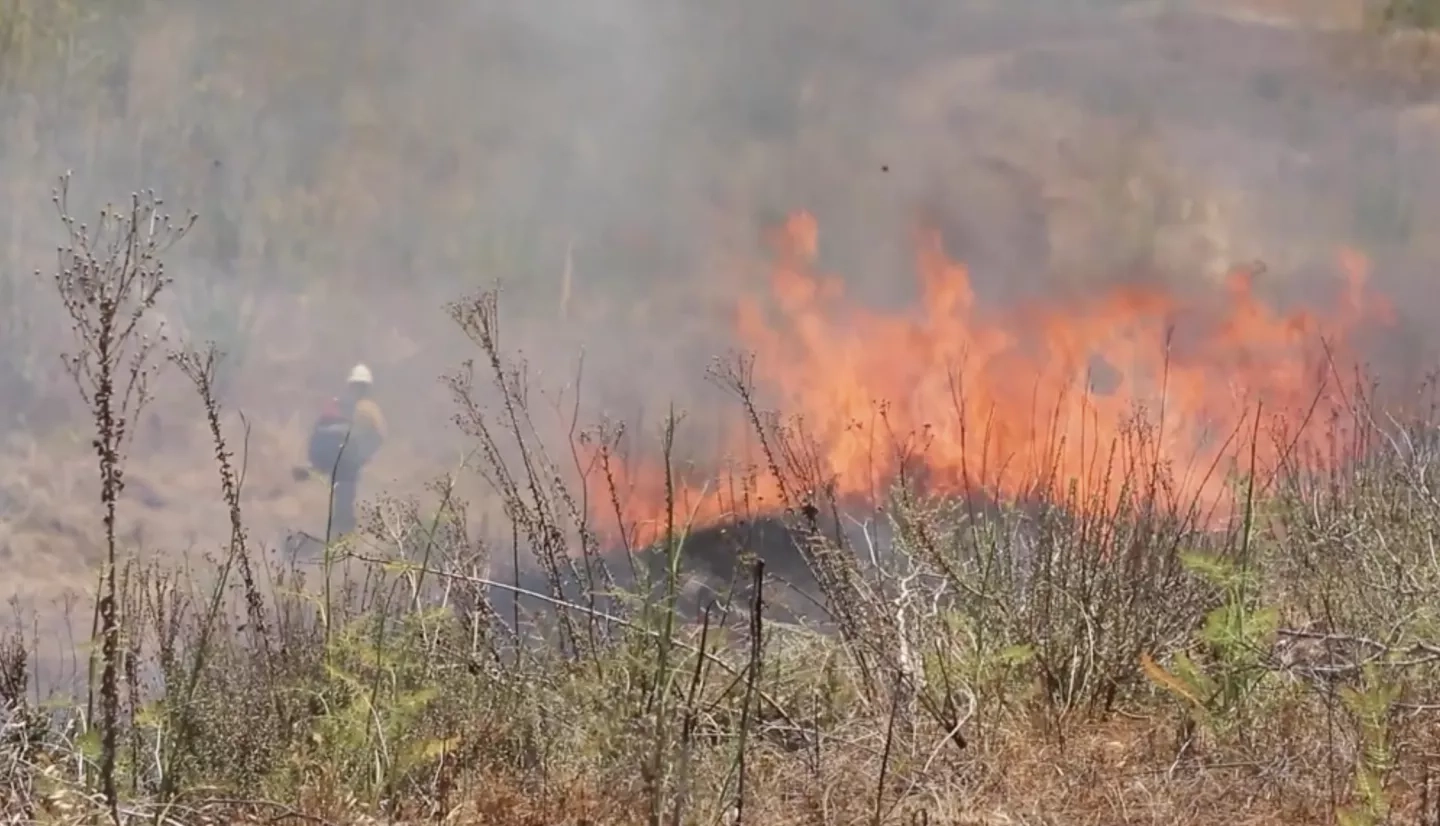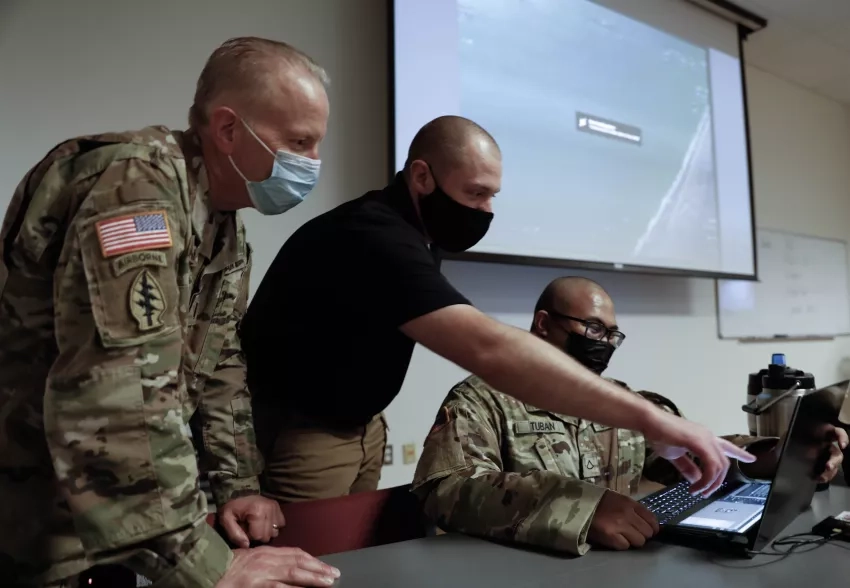Alarms go off, firefighters grab their gear and head to the scene of a wildfire. Luckily this time it’s only a drill, a prescribed burn exercise called BurnEx. The goal is for first responders to practice their craft and try out new techniques, and for the first time in one of these exercises, NASA was in the room too.
“We don’t want to make them change the way they do things to include us if the way they do things works well,” said Brady Helms, a disaster management coordinator with NASA Applied Sciences Disasters program area. His goal was to watch, learn and identify how best NASA’s satellite data could assist California emergency response efforts. “It’s up to us to try to figure out how we can integrate into their existing system.”
BurnEx took place June 8-10, 2021, and included prominent wildfire response organizations including the California National Guard, CAL FIRE and the California State Guard. The prescribed burn happened at Camp Pendleton, Calif., while Helms and others watched from an operations center set up in a United States Forest Service conference room.
On the day of the fire, June 9, Helms had a front-row seat to the action from the operations center. He watched on video as CAL FIRE arrived on the field to assess the fire. After communicating with their analysis unit, they called in the California National guard for air support. The aerial video and photo footage they provided were vital to understanding the fire’s growth and behavior. BurnEx was designed to mimic a spontaneous wildfire as realistically as possible, so there were several ignition points for the national guard to capture and relay to operations. They also needed to pinpoint the location of CAL FIRE team members who had deployed their fire shelters for a simulated rescue mission.
One of the objectives for BurnEx was to test out more direct communication techniques. Typically, requests between folks on the ground and air support would be relayed through several locations in between. Not only was this method inefficient, but critical details could sometimes be lost along the way. Their new method is internet-based, allowing anyone with permissions to communicate directly with the aircraft. In the case of the rescue simulation, anyone on the ground who found the “trapped” team could hop on a mobile app to send a report directly to the national guard, speeding up the time aircraft can arrive and administer life-saving aid.
The new communication method proved successful — and the exercise overall went well, from Helms’s perspective. Being a part of the action more directly than ever before, Helms gained valuable insights into understanding how emergency managers and first responders tackle wildfires. It’s a view he’s taking back to the Disasters team to see how NASA assets can be put to use during a response. “With our NASA Disasters Mapping Portal, we can provide value-added situational awareness for things like smoke, air quality, fire extent and burn severity, which can be coupled with other data sets they already have and that operational agencies put out.”
Since the first and last day were dedicated to addressing questions and discussing capabilities, strengths and weaknesses, he was able to show the other participants what products NASA can provide and how to use them. And perhaps most importantly, Helms felt he made critical inroads in building trust with the various stakeholders.
“Developing relationships ahead of time is key because you can understand their questions ahead of time, work through them, get clarification and build trust with people,” Helms said. “The emergency management phrase is ‘you don’t want to meet somebody for the first time by exchanging business cards over the hood of a car at the incident scene.’”
The successes and lessons learned from BurnEx, Helms said, will translate well to the Disasters program area’s wildfire support around the globe. “Whether there’s a fire in California or Australia, our support will be fairly similar — the key difference will be who our local partners are,” he added. But participating in exercises like these helps the Disasters team anticipate common needs and questions first responders everywhere tend to have, making it easier for NASA to be ready whenever and wherever they’re needed.
---
More about Brady Helms can be found at this profile: Trial by Fire: What Brady Helms Learned from the 2018 Camp Fire







